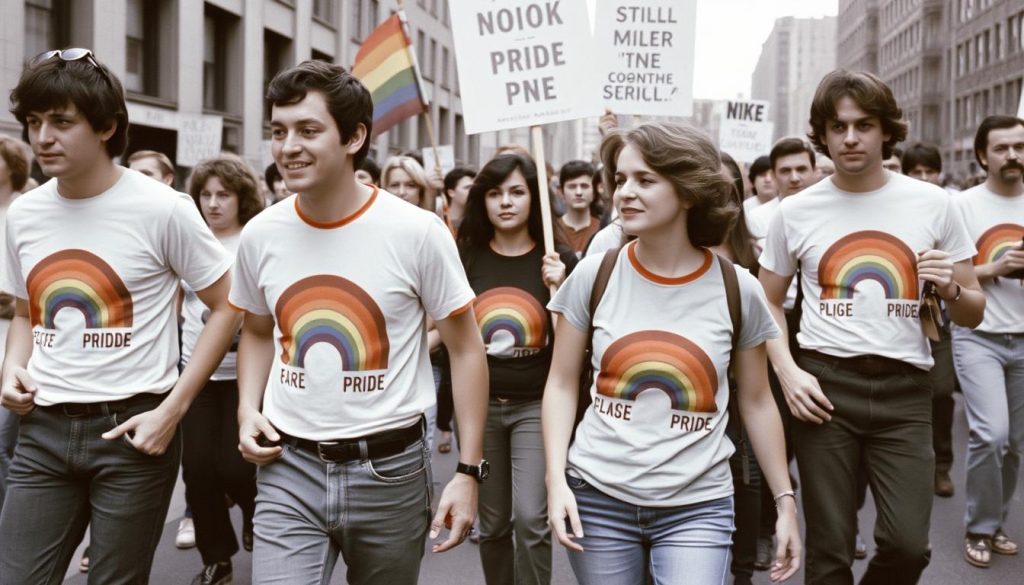Tshirt pride
Pride t-shirts have evolved from simple protest wear to powerful symbols of identity, community, and advocacy. These colorful garments do more than just make a fashion statement—they tell stories of struggle, resilience, and celebration that span decades of LGBTQ+ history. Whether worn at marches, everyday outings, or as statements of allyship, pride t-shirts have become cultural artifacts that both document and advance the ongoing journey toward equality.
In this exploration of pride apparel, we’ll trace the historical significance of these garments, examine how designs and messaging have evolved, and showcase some of the most impactful contemporary styles. We’ll also address the importance of ethical sourcing in an era when rainbow capitalism often threatens to overshadow authentic representation.
The Historical Journey of Pride T-Shirts as Advocacy Tools
Early pride demonstrations in the 1970s featured homemade t-shirts as statements of visibility and protest
The first pride t-shirts emerged in the aftermath of the 1969 Stonewall riots, when LGBTQ+ activists needed visible symbols to unite under. These early designs were often handmade, featuring simple rainbow motifs or bold statements like “Gay Power” and “Out of the Closets and Into the Streets.” What began as protest wear quickly evolved into symbols of community solidarity.
By the 1980s, during the height of the AIDS crisis, t-shirts became crucial tools for activism. The iconic “Silence = Death” design with its pink triangle—reclaiming a symbol used to persecute gay men during the Holocaust—demonstrated how pride apparel could communicate urgent political messages while building community awareness.
The 1990s saw pride t-shirts enter mainstream visibility, with organizations like the Human Rights Campaign producing their now-recognizable blue and yellow equals sign logo. This period marked a transition from purely protest-oriented messaging to more diverse expressions of identity and celebration.
Explore Historical Pride Collections
Discover t-shirts that celebrate the rich history of LGBTQ+ activism and feature iconic historical figures who shaped the movement.
The Cultural Significance of Pride T-Shirt Designs
Pride t-shirts serve as wearable canvases that communicate complex identities and political stances through visual shorthand. The choice of colors, symbols, and slogans on these garments is never arbitrary—each design element carries specific cultural significance within LGBTQ+ communities.
The rainbow flag, created by Gilbert Baker in 1978, remains the most recognizable pride symbol. Its six colors (originally eight) represent different aspects of human experience: red for life, orange for healing, yellow for sunlight, green for nature, blue for harmony, and violet for spirit. When featured on t-shirts, this spectrum communicates a message of inclusive diversity.
Beyond the classic rainbow, contemporary pride apparel has expanded to include designs featuring specific identity flags—transgender, bisexual, pansexual, asexual, and many others. This evolution reflects a growing recognition of the diversity within LGBTQ+ communities and provides visibility for identities that have historically been marginalized even within queer spaces.
“Wearing a pride t-shirt is both a personal declaration and a public invitation. It says ‘This is who I am’ while also saying ‘You are not alone.'”
— Sarah Prager, LGBTQ+ historian and author
Slogan choices on pride shirts have evolved from confrontational protest messages to more nuanced expressions. Contemporary designs often feature affirming statements like “Love Wins” or “Be Yourself,” while others employ humor or cultural references that resonate within queer communities. These linguistic choices reflect shifting advocacy strategies—from demanding basic rights to celebrating identity and building broader cultural acceptance.
The Evolution of Inclusive Sizing and Gender-Neutral Designs
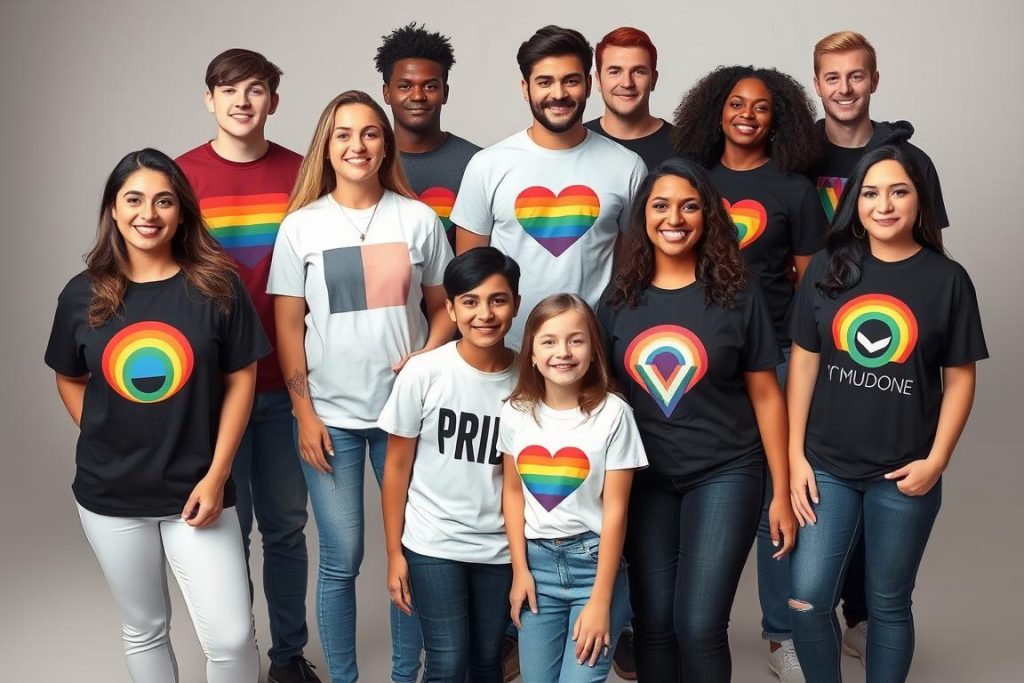
The evolution of pride apparel has increasingly embraced inclusive sizing and gender-neutral designs—a significant development considering the importance of body autonomy and gender expression within LGBTQ+ communities. Early pride merchandise often followed conventional binary sizing and cuts that reinforced gender norms, creating a disconnect between the message and the medium.
Today’s most progressive pride apparel brands offer extended size ranges (typically XS-4XL) and cuts that don’t conform to binary gender expectations. This shift acknowledges that pride celebrations should be accessible to all body types and gender expressions, not just those that fit conventional standards.
Traditional Approach
- Binary “men’s” and “women’s” cuts
- Limited size ranges (typically S-XL)
- Gendered marketing language
- Designs that reinforce gender stereotypes
Inclusive Approach
- Gender-neutral or “unisex” cuts
- Extended size ranges (XS-4XL or beyond)
- Neutral marketing language
- Designs that celebrate diverse expressions
The language used to market these garments has also evolved. Instead of “men’s” and “women’s” sections, many queer-owned brands now categorize their offerings by cut and fit: “straight cut,” “fitted cut,” or simply “unisex.” This subtle shift in terminology creates a more welcoming shopping experience for non-binary, genderfluid, and transgender customers.
Mainstream Adoption and Its Impact on Queer Communities
The increasing visibility of pride t-shirts in mainstream retail spaces represents both progress and paradox for LGBTQ+ communities. On one hand, widespread availability signals growing social acceptance and provides visibility in spaces previously closed to queer expression. On the other, this mainstreaming often comes with concerns about authenticity, exploitation, and “rainbow capitalism.”
Benefits of Mainstream Adoption
- Increased visibility in everyday spaces
- Normalization of LGBTQ+ symbols and language
- Greater accessibility for those in isolated areas
- Potential for corporate financial support of causes
Concerns About Mainstream Adoption
- Seasonal “rainbow washing” without year-round support
- Profit exploitation without community reinvestment
- Dilution of political messages and history
- Questionable labor practices in production
Many major retailers now release pride collections each June, but their commitment to LGBTQ+ communities often comes under scrutiny. Authentic engagement is increasingly measured by year-round support, transparent donation practices, and internal policies that protect LGBTQ+ employees—not just seasonal merchandise.
For consumers seeking to make values-aligned purchases, the distinction between performative allyship and genuine support has become crucial. Many now research a company’s political donations, workplace policies, and charitable partnerships before purchasing pride merchandise.
Questions to Ask Before Buying: Does the company donate proceeds to LGBTQ+ organizations? Do they have inclusive workplace policies? Do they support anti-LGBTQ+ politicians or causes? Is their pride support year-round or only during Pride Month?
5 Popular Pride T-Shirt Designs and Their Symbolism
Pride t-shirts come in countless designs, but certain motifs have emerged as particularly meaningful and popular. Each combines visual impact with deeper symbolic significance, allowing wearers to communicate specific aspects of identity or allyship.
Progress Pride Flag Design
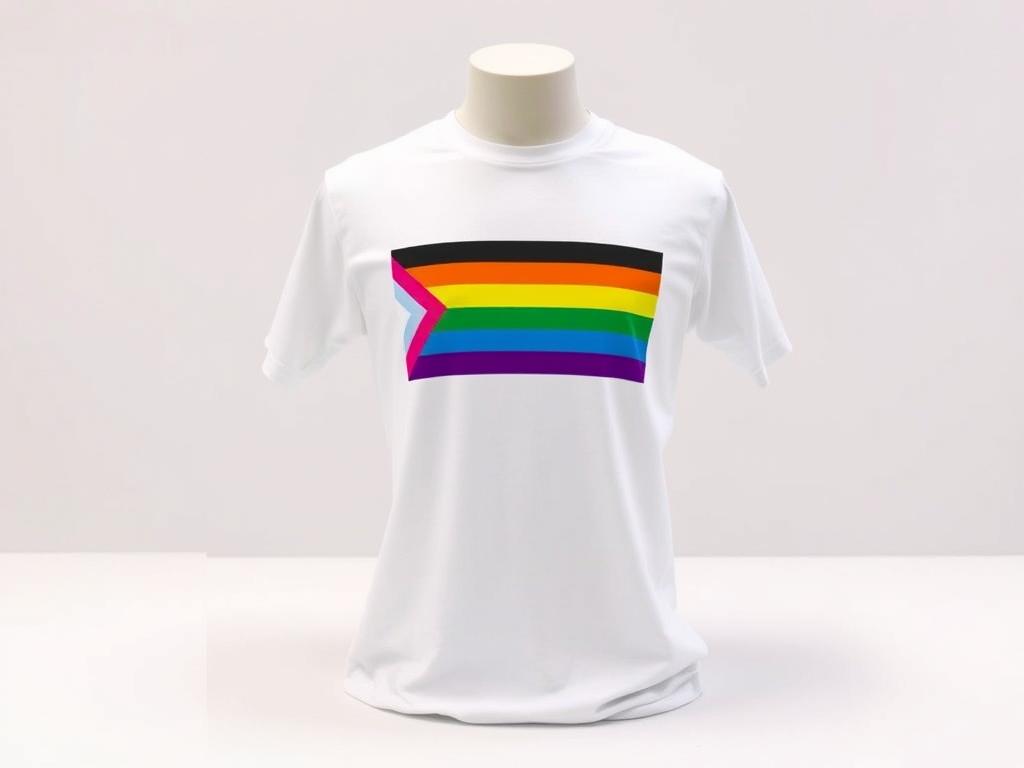
Daniel Quasar’s 2018 Progress Pride flag design adds black and brown stripes to represent LGBTQ+ people of color, along with pink, light blue, and white to incorporate transgender flag colors. T-shirts featuring this design acknowledge intersectionality and signal support for the most marginalized within LGBTQ+ communities.
Show your support for all members of the LGBTQ+ community with this inclusive design.
“Love Wins” Typography
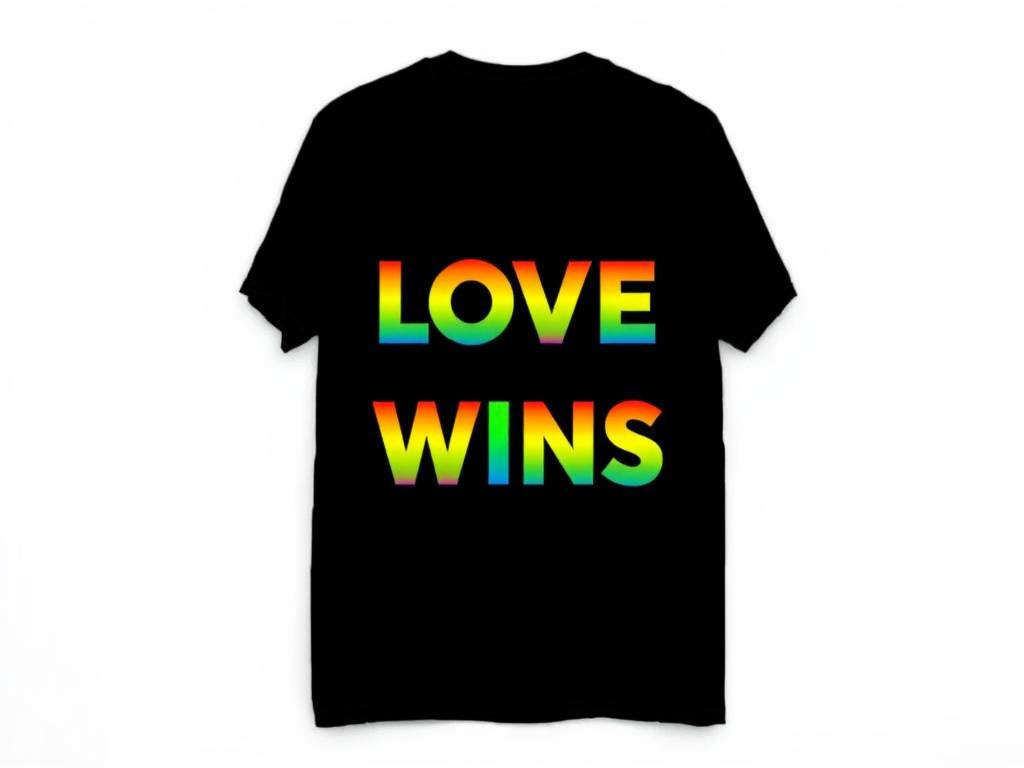
Popularized during the marriage equality movement, “Love Wins” became a rallying cry after the 2015 U.S. Supreme Court decision legalizing same-sex marriage. T-shirts featuring this phrase—typically in rainbow lettering—celebrate this milestone while affirming the universal value of love regardless of gender or sexuality.
Celebrate love in all its forms with this iconic pride message.
Historical Figure Tributes
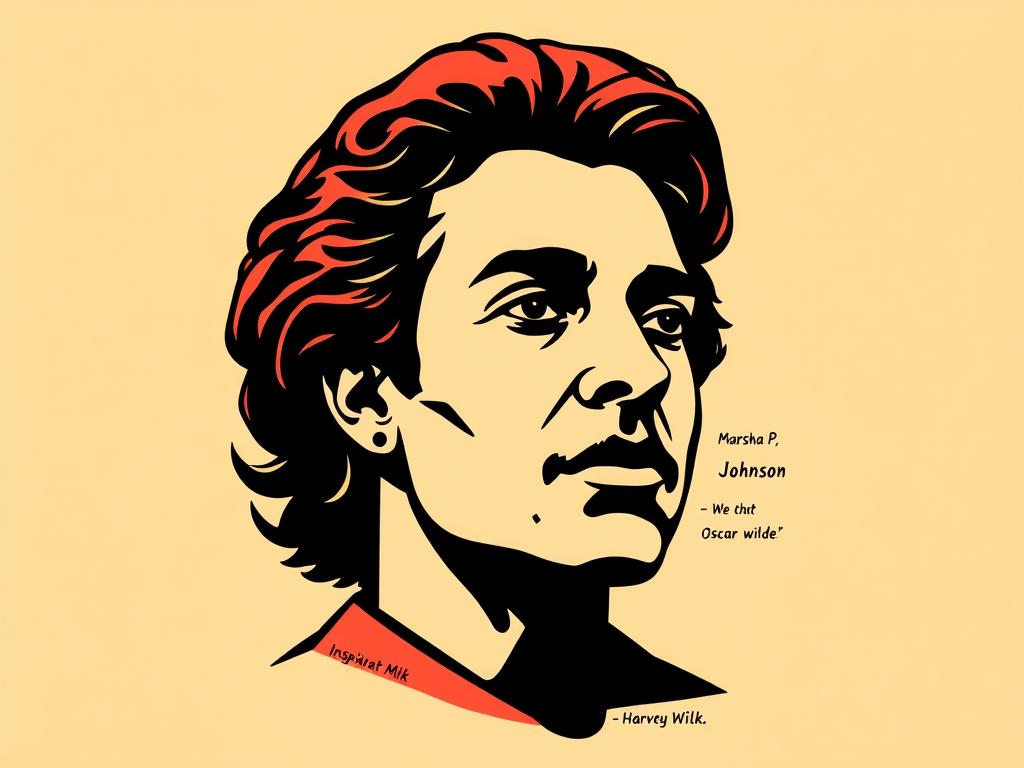
T-shirts featuring LGBTQ+ historical figures—from Oscar Wilde to Marsha P. Johnson—connect wearers to the rich legacy of queer history. These designs often include powerful quotes or artistic renderings that educate others while honoring those who paved the way for today’s rights and visibility.
Wear your history and educate others with these tribute designs featuring LGBTQ+ icons.
Identity-Specific Flag Designs
Beyond the rainbow flag, t-shirts featuring specific identity flags have gained popularity. The pink-purple-blue bisexual flag, pink-blue-white transgender flag, and other identity-specific designs allow individuals to celebrate their particular identity within the broader LGBTQ+ umbrella.
Witty Wordplay and Humor
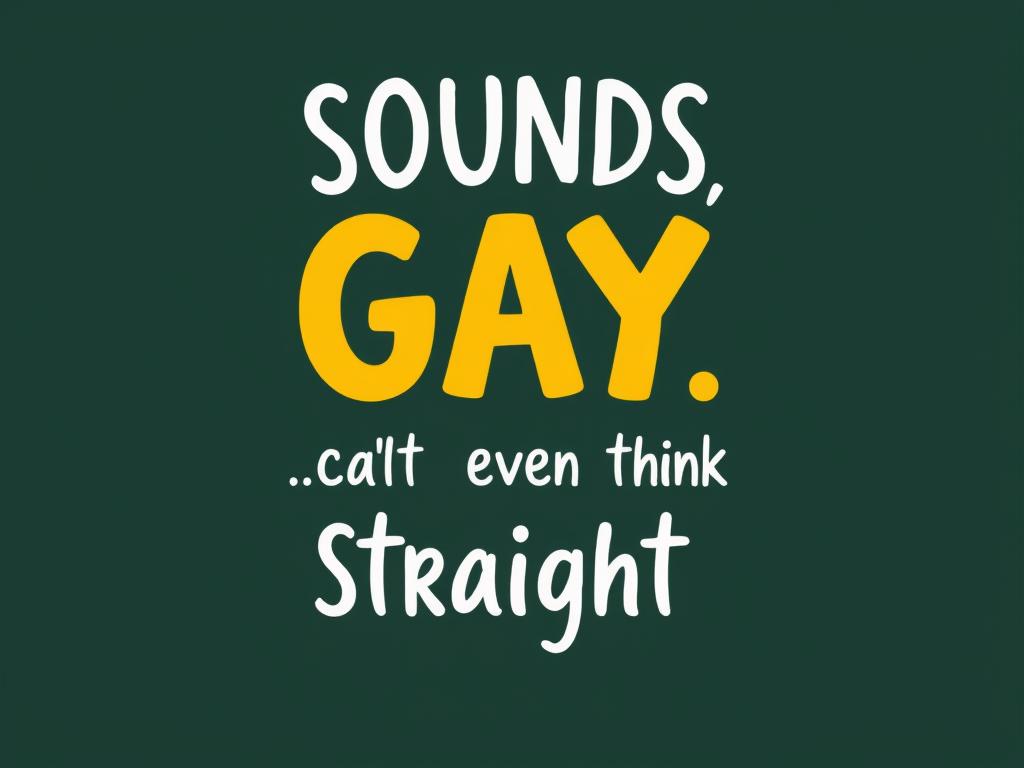
Humorous designs featuring queer wordplay—phrases like “Sounds Gay, I’m In” or “Can’t Even Think Straight”—use wit to disarm prejudice while creating moments of recognition and joy within the community. These shirts often serve as conversation starters and tension breakers in everyday settings.
Add some humor to your pride wardrobe with these witty designs.
Ethical Sourcing Guide for Pride Apparel
As pride merchandise becomes increasingly commercialized, ethical sourcing has emerged as a crucial consideration for conscious consumers. Authentic pride apparel should align with LGBTQ+ values not just in design, but throughout the entire production process.
Research the Brand
- Verify LGBTQ+ ownership or authentic allyship
- Check year-round support (not just June)
- Review political donations and advocacy positions
- Look for transparency about charitable contributions
Production Ethics
- Seek fair labor certifications
- Look for organic or recycled materials
- Check for sustainable printing processes
- Verify living wage commitments
Community Impact
- Prioritize queer-owned businesses
- Look for local production when possible
- Support brands that employ LGBTQ+ workers
- Check for inclusive workplace policies
The Human Rights Campaign’s Corporate Equality Index provides valuable insights into major companies’ LGBTQ+ policies and practices. For smaller brands, look for transparent communication about their values, ownership, and production processes.
Certification Labels to Look For: Fair Trade Certified, GOTS (Global Organic Textile Standard), B Corp, 1% for the Planet, and WRAP (Worldwide Responsible Accredited Production) are good indicators of ethical production practices.
Recommended Queer-Owned and Ethical Pride Apparel Sources
| Brand | Ownership | Ethical Highlights | Price Range |
| Flavnt Streetwear | Trans-owned | Funds gender-affirming surgeries, sustainable materials | £20-35 |
| The Spark Company | Woman-owned, LGBTQ+ supportive | Supports women in need with each purchase | £22-29 |
| Gay Pride Shop | LGBTQ+ owned | Organic cotton, gender-neutral sizing | £21-30 |
| NPG Pride Collection | Cultural institution | Organic cotton, printed to order, supports arts | £20-25 |
| Otherwild | Queer woman-owned | Made in USA, donates to LGBTQ+ causes | £25-40 |
DIY Pride T-Shirt Ideas
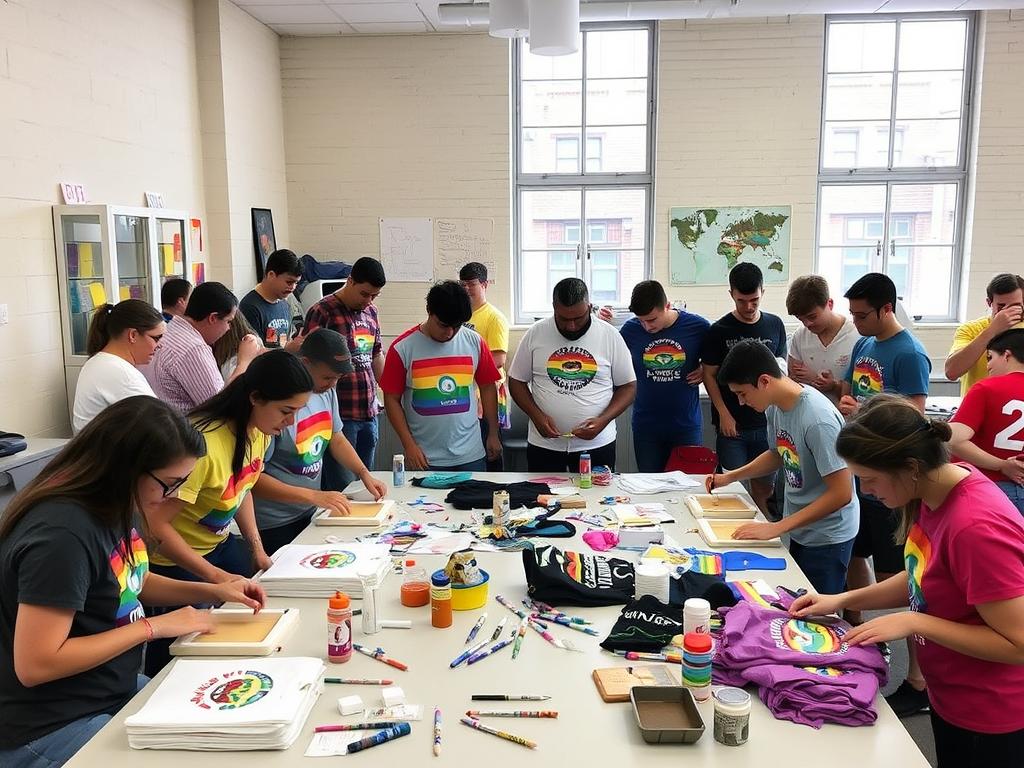
Creating your own pride t-shirt offers a personalized alternative to commercial options. DIY approaches range from simple iron-on transfers to more advanced screen printing techniques, allowing for completely customized expressions of identity and allyship.
Beginner-Friendly Methods
- Iron-on transfer paper for custom designs
- Fabric markers for hand-drawn elements
- Pre-cut vinyl letters and symbols
- Tie-dye in pride flag color schemes
Advanced Techniques
- Screen printing with DIY kits
- Block printing with custom carved stamps
- Embroidery for textured elements
- Fabric appliqué for dimensional designs
Community workshops and skill-sharing events often provide access to equipment and expertise that might be inaccessible to individuals. These collaborative spaces also foster connection while creating meaningful personal expressions of pride.
Wearing Your Pride: More Than Just Fashion – tshirt pride
Pride t-shirts represent far more than just fashion choices, they’re wearable statements of identity, community belonging, and political consciousness. In a world where LGBTQ+ rights remain contested in many regions, these garments serve as everyday acts of visibility that can both affirm the wearer and educate others.
As you consider adding pride apparel to your wardrobe, remember that the most meaningful purchases align with your values throughout the entire production chain. Whether you choose to support queer-owned businesses, create your own designs, or carefully select from mainstream options with proven commitments to equality, your choice matters.
The evolution of pride t-shirts, from DIY protest wear to diverse, inclusive designs, mirrors the broader journey of LGBTQ+ communities toward recognition, celebration, and belonging. By wearing these symbols thoughtfully, you become part of this ongoing story of visibility, advocacy, and pride.

